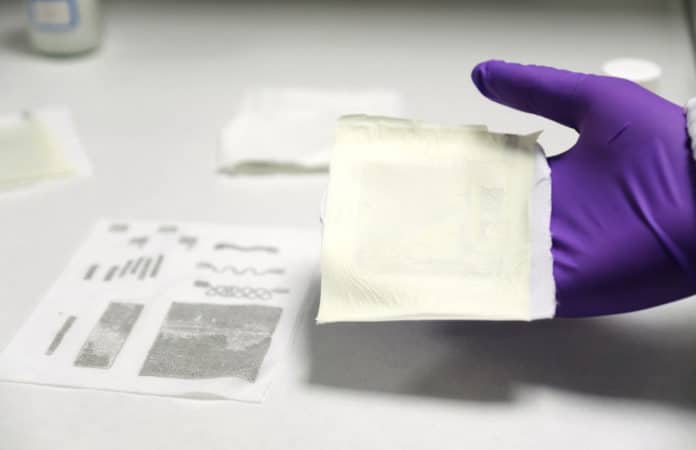There have been many attempts to develop fabric or garments that can harvest energy from movement. But it has always been a challenge to develop something that does not degrade in function after being washed and, at the same time, retains excellent electrical output.
Now, researchers at Nanyang Technological University, Singapore (NTU Singapore) have developed a stretchable and waterproof fabric that turns energy generated from the smallest body movements in everyday life into electricity.
The electricity-generating fabric is made of two main components – poly(vinylidene fluoride)-co-hexafluoropropylene (PVDFHPF), a polymer that converts mechanical stress into electrical energy when pressed or squeezed, and lead-free perovskites, a promising material in the field of solar cells and LEDs.
The fabric contains a stretchable electrode that is screen-printed with an ‘ink’ comprising silver and styrene-ethylene-butylene-styrene (SEBS), a rubber-like material – found in general-purpose items such as teethers and handlebar grips – to keep it strong, flexible, and waterproof. The result is a prototype fabric that generates 2.34 watts per square meter of electricity. This is enough to power small electronic devices, such as LEDs and commercial capacitors.
In a proof-of-concept experiment, the NTU Singapore team showed that tapping on a 3cm by 4cm piece of the new fabric generated enough electrical energy to light up 100 LEDs. The fabric showed good durability and stability – washing, folding, and crumpling the fabric did not cause any performance degradation. It also continued to produce a continuous stable electrical output for up to five months, demonstrating its potential for use as a smart textile and wearable power source.
The electricity-generating fabric could harness energy from a range of human movements by attaching it to the arm, leg, hand, and elbow, as well as to the insoles of shoes, and did so without impacting the movements.
“Our results show that our energy harvesting prototype fabric can harness vibration energy from a human to potentially extend the lifetime of a battery or even to build self-powered systems,” said Professor Lee Pooi See, who led the study. “To our knowledge, this is the first hybrid perovskite-based energy device that is stable, stretchable, breathable, waterproof, and at the same time capable of delivering outstanding electrical output performance.”
The team is now looking at how the same energy-harvesting fabric could be adapted to harvest different forms of energy.
